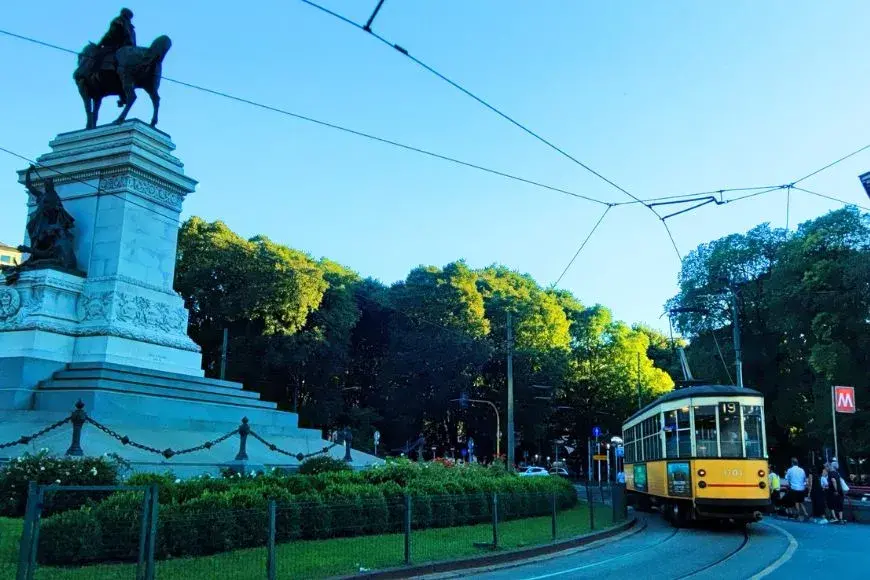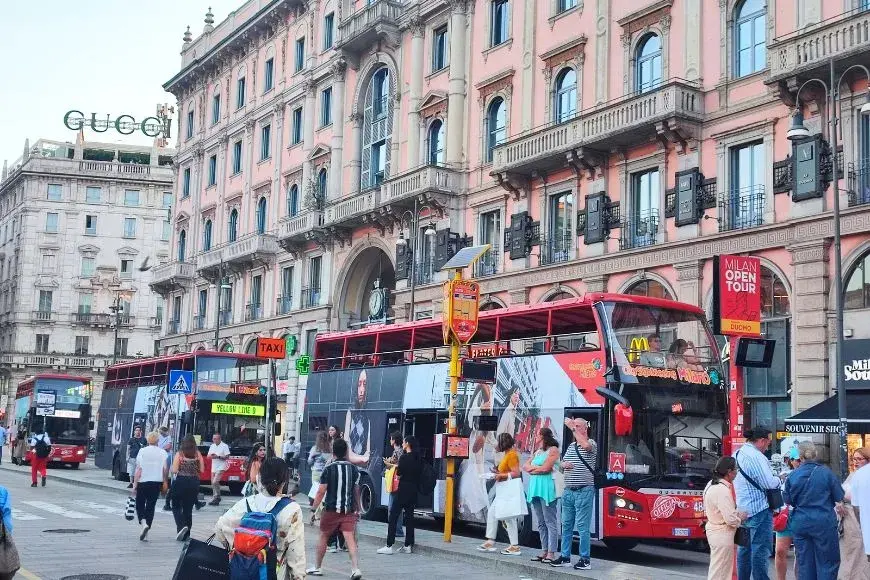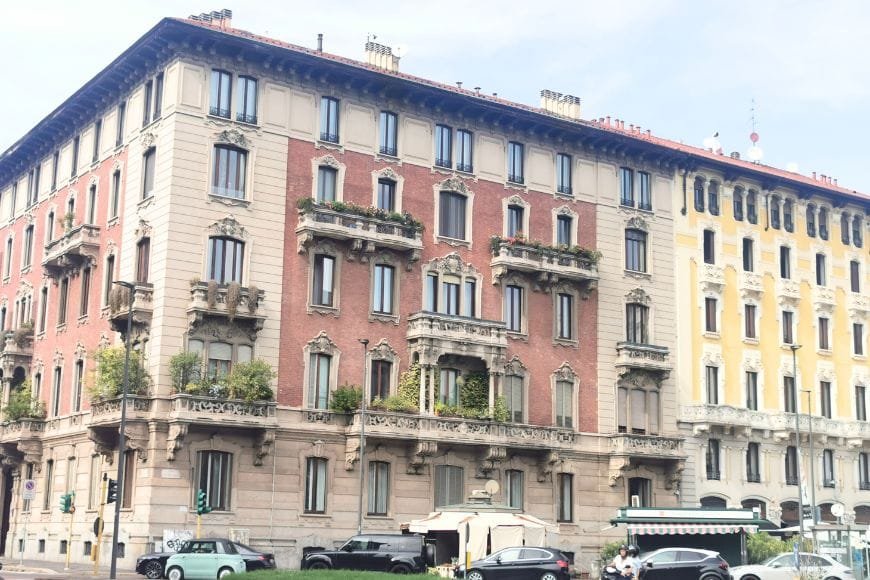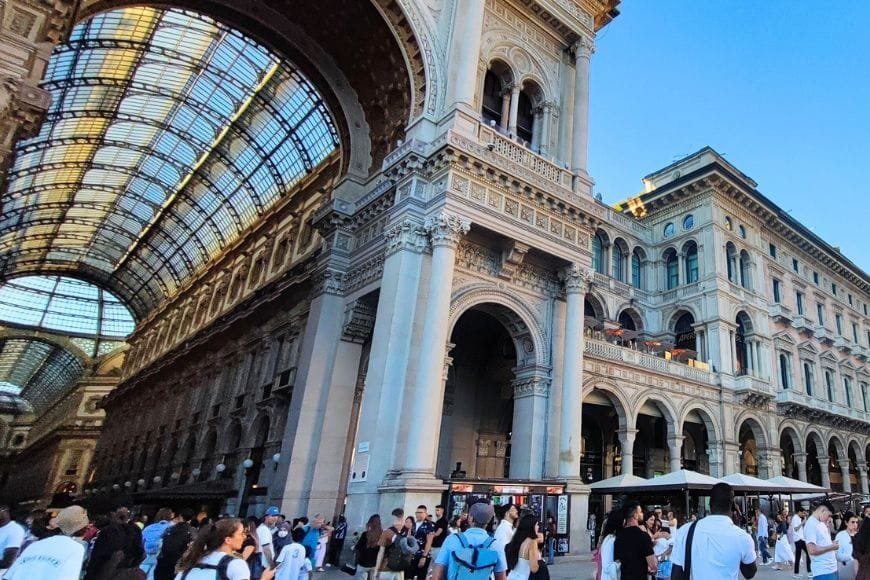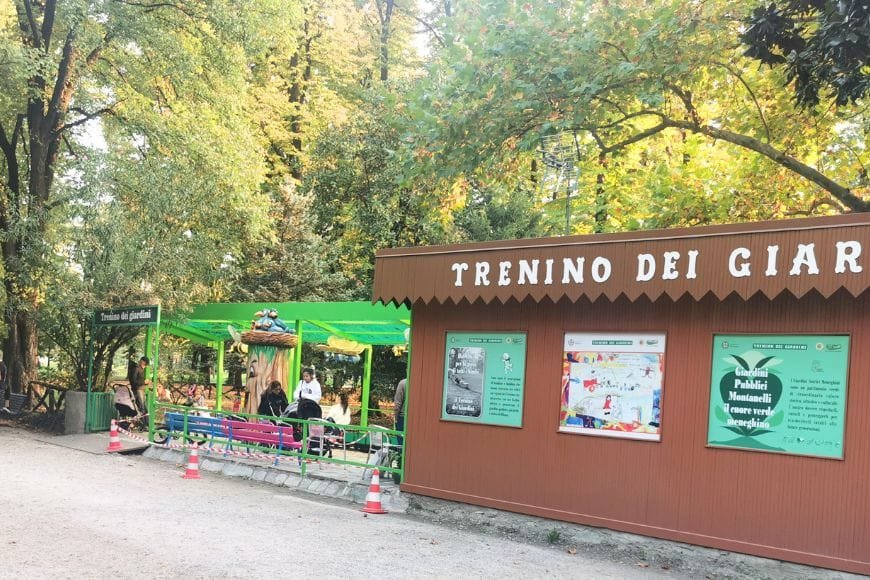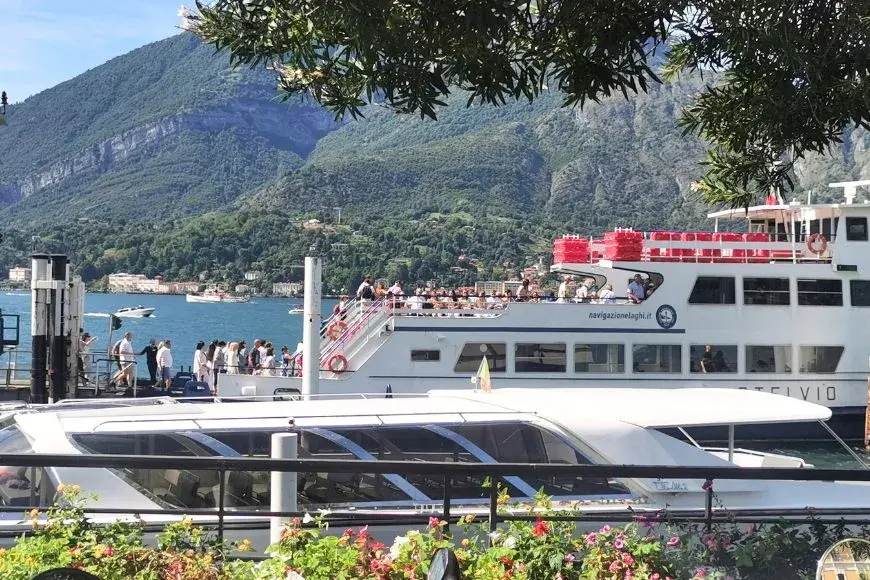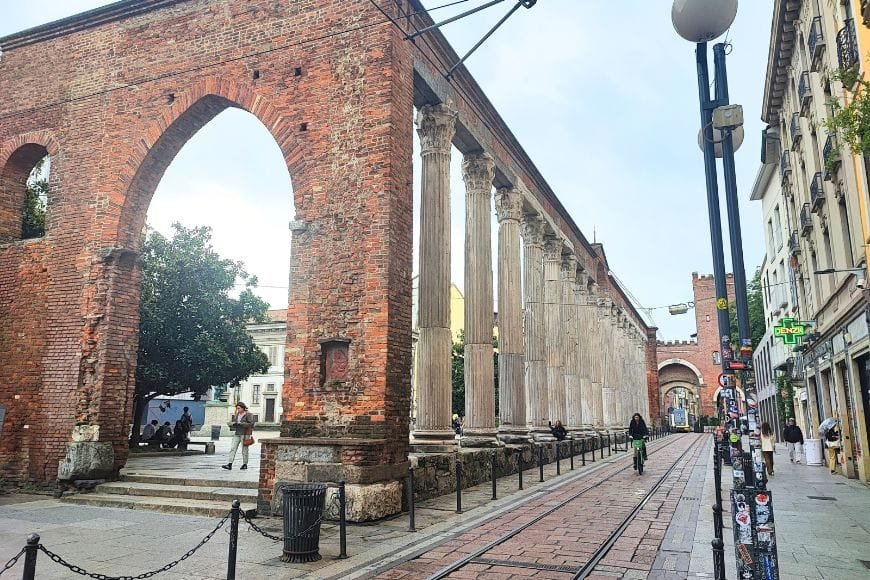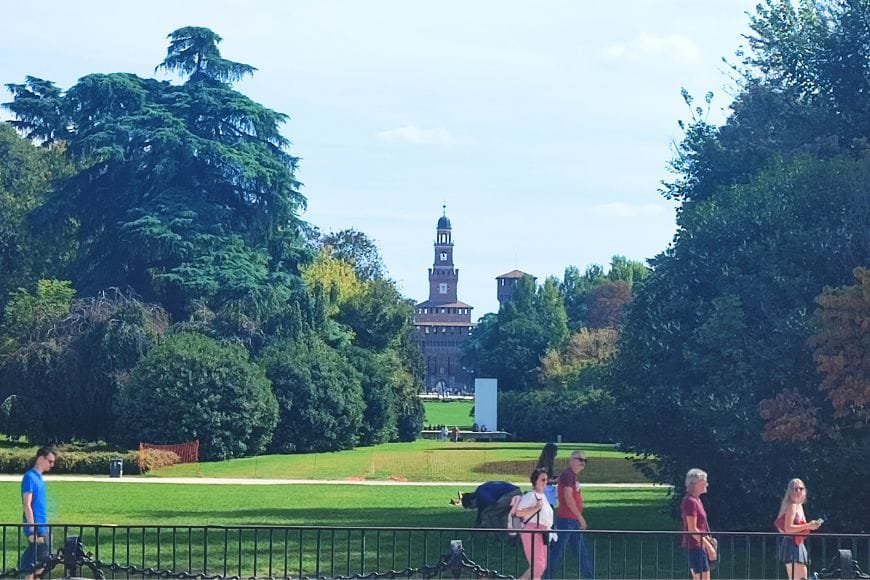How to Get Around Italy: Complete 2025 Transportation Guide

by Asia A. | Last Updated August 24, 2025
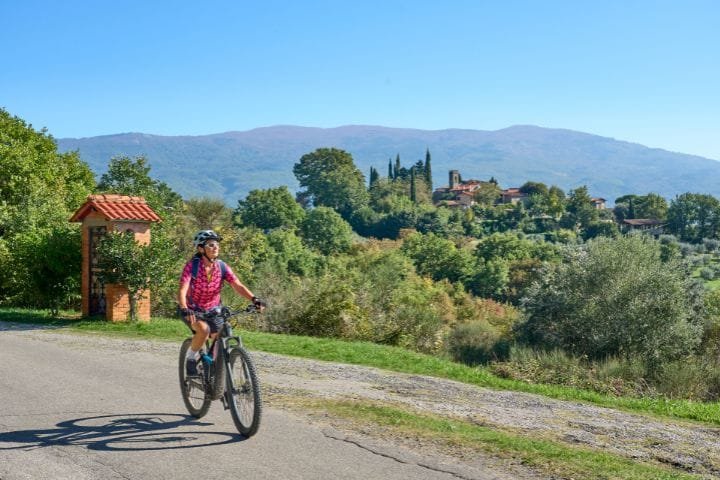
Here’s something that might surprise you: getting around Italy is actually way easier than most visitors expect – but your choice of transportation can absolutely make or break your Italian adventure.
As someone who has lived in Milan his entire life and regularly travels throughout Italy, I’ve learned that the secret isn’t finding one perfect transport method, but knowing exactly when to use each option.
Most tourists get overwhelmed because they try to apply their home country’s logic to our unique system. The reality? Italy has some of Europe’s best high-speed trains that can get you from Milan to Rome faster than driving, but also tiny hill towns accessible only by winding roads. We have efficient metros in major cities, but also ferry connections to pristine islands.
From my daily Milan metro commute to weekend Tuscany road trips, I’ve experienced every transportation method Italy offers – including plenty of mistakes that taught me what works and what doesn’t.
This 2025 guide will show you exactly how to get around Italy — with real, up-to-date costs, insider tips, and honest pros and cons for every transportation option. Whether you’re hopping between cities, exploring hidden villages, or island-hopping, you’ll learn how to navigate the country like someone who actually lives here.
If you want all your Italy travel questions answered in one place, start with 👉 The Ultimate Italy Travel Guide (2025) – Your one-stop resource for itineraries, transportation advice, seasonal tips, and insider secrets from locals and seasoned travelers.
Transportation in Italy at a Glance
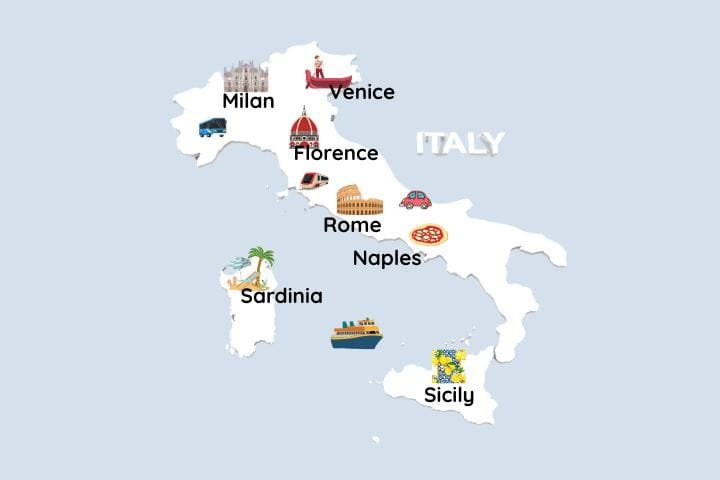
Let me cut through the confusion with a quick reality check on your main transport options. Each method has its sweet spot, and knowing when to use what saves you time, money, and frustration.
| Transport Method | Best For | Cost Range | Booking Ease | Coverage |
|---|---|---|---|---|
| 🚄 High-Speed Trains | Major cities, speed, comfort | €25–80 | Very easy | Excellent north–central |
| 🚆 Regional Trains | Budget travel, local routes | €5–25 | Easy | Comprehensive |
| 🚗 Rental Car | Countryside, flexibility, small towns | €30–60/day + fuel | Moderate | Complete freedom |
| 🚌 Buses | Budget routes, areas without rail | €10–40 | Easy | Good for gaps |
| ✈️ Domestic Flights | Long distances, islands | €40–120 | Easy | Limited routes |
| ⛴️ Ferries | Islands, scenic routes | €15–80 | Moderate | Coastal/islands only |
Quick Transport Comparison
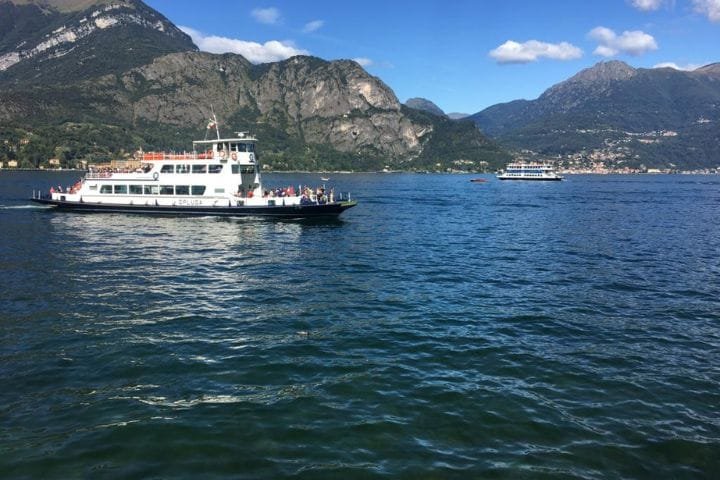
When Each Transport Method Wins
The key insight? Don’t overthink it. Italy’s transport network is designed to work together, and locals regularly switch between trains, cars, and buses depending on where they’re going. Once you understand each method’s strengths, getting around becomes intuitive rather than stressful. Here’s the full picture:
Choose trains when: Traveling between major cities, want to relax, avoiding traffic stress, or going Rome-Milan-Florence-Venice triangle.
Choose cars when: Exploring Tuscany/countryside, visiting multiple small towns, traveling with lots of luggage, or needing complete schedule flexibility.
Choose buses when: On a tight budget, trains don’t reach your destination, or traveling to rural mountain areas.
Choose flights when: Going to Sicily/Sardinia, very long north-south routes (Milan to Palermo), or when time is more important than cost.
Choose ferries when: Visiting islands, want scenic coastal routes, or combining transport with a sightseeing experience.
The Milan insider perspective: Most smart travelers combine methods. I typically take high-speed trains between major cities, then rent cars for countryside exploration. Tourists who stick to just one transport type miss out on Italy’s incredible diversity and often spend way more money than necessary.
Getting Around Italy by Train
Honestly? Italian trains are probably way better than whatever you’re expecting. I take the Milan-Rome route sometimes for work, and it consistently amazes visitors how smooth, fast, and comfortable our rail system has become. But here’s what you need to know to use it like a local.
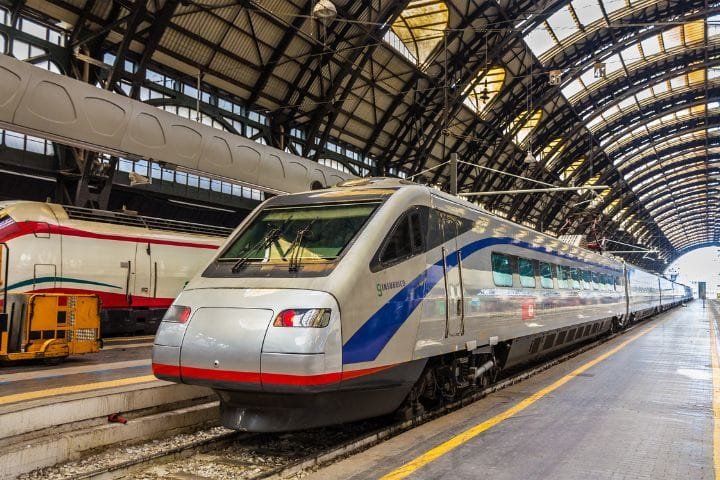
Types of Trains in Italy
High-Speed Trains (Alta Velocità):
- Frecciarossa (Red Arrow): The flagship – Milan to Rome in 2 hours 50 minutes, up to 300 km/h
- Frecciargento (Silver Arrow): Slightly slower but reaches more destinations
- Frecciabianca (White Arrow): Connects major cities without dedicated high-speed tracks
- Italo: Private competitor offering similar speeds with modern trains
Regional and Intercity Trains:
- Intercity (IC): Faster regional connections, reserved seating, moderate prices
- Regional (R): Local trains stopping at every station, cheapest option, no reservations needed
- Regional Veloce (RV): Express regional service with fewer stops
Real talk: High-speed trains are genuinely impressive – comfortable seats, reliable WiFi, smooth rides, and they arrive on time. Regional trains are basic but perfectly functional for short distances and budget travel.
How to Book Train Tickets in Italy?
Official booking platforms:
- Trenitalia.com: National railway website and app
- Italiarail.com: English-language booking service
- Italo.it: Private high-speed operator
- Trainline: Third-party with booking fees but a user-friendly interface
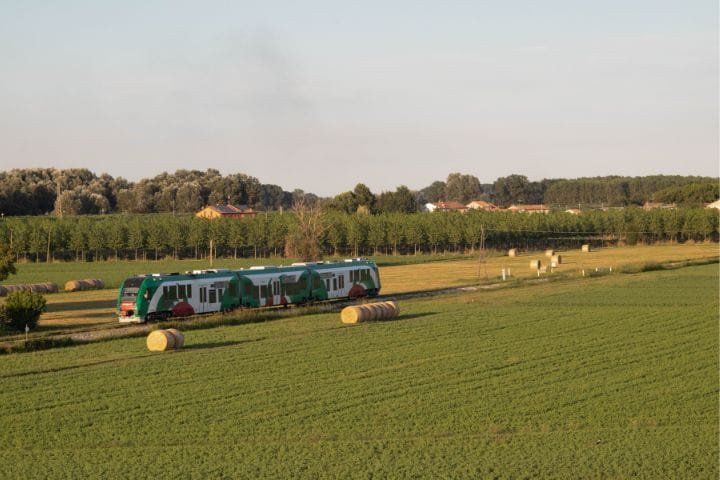
Local booking tips:
- Book high-speed trains in advance for the best prices (up to 4 months ahead)
- Regional trains can’t be reserved – just buy and board
- Mobile tickets work perfectly, no need to print
- Station ticket machines accept international cards
My personal booking strategy: I use the Omio app for most bookings since it’s cheapest and works offline once downloaded. For complex international itineraries, sometimes third-party sites are worth the small booking fee for convenience.
Train Costs in Italy and How to Save?
High-Speed Train Pricing:
- Economy (Standard): €29-79 depending on route and time
- Premium (1st Class): €45-120 with larger seats and included snacks
- Business: €80-200 with luxury seating and lounge access
Regional Train Costs:
- Short routes (30-60 minutes): €3-8
- Medium routes (1-2 hours): €8-15
- Long regional routes: €15-25
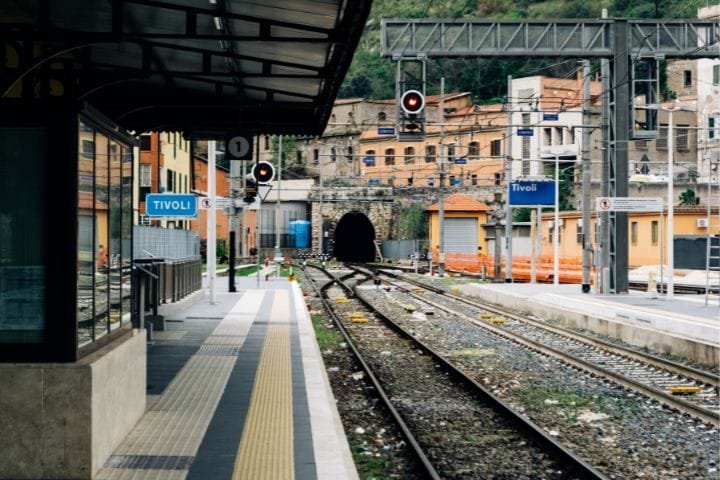
Money-saving strategies:
- Book early: High-speed trains offer “Super Economy” fares up to 60% off
- Travel off-peak: Avoid Friday evenings and Sunday afternoons
- Consider regional trains: Slower but dramatically cheaper for budget travelers
- Trenitalia Pass: Can save money for extensive train travel (do the math first)
Price reality check: A Milan-Rome high-speed ticket costs €29-59 if booked in advance, versus €150+ for last-minute purchases. The difference is massive.
Pros and Cons of Italian Train Travel
Major advantages:
- City center to city center (no airport transfers)
- No security delays or baggage restrictions
- Comfortable seating with legroom
- Reliable punctuality on high-speed routes
- Environmental friendliness
- Scenic routes through beautiful countryside
Honest limitations:
- Limited coverage in rural areas (especially southern Italy)
- Regional trains can be slow and basic
- Strike days occasionally disrupt service (with advance notice)
- Some routes require connections
- Peak hour crowds on popular routes
Get our FREE Italy
Travel Guide
E-Book
This printable guide is your ultimate companion for exploring Italy, with insider tips, detailed itineraries, transportation advice, must-see attractions, and more.
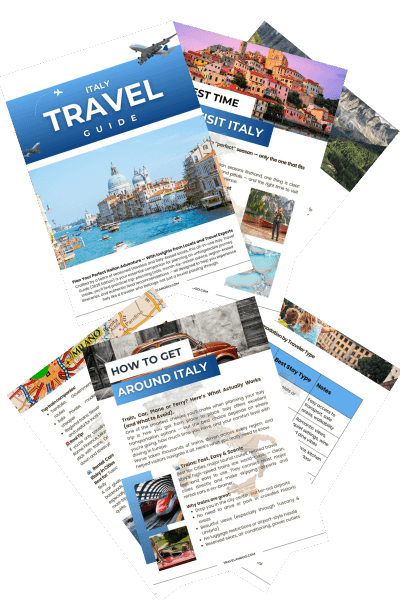
Best Scenic Train Routes in Italy
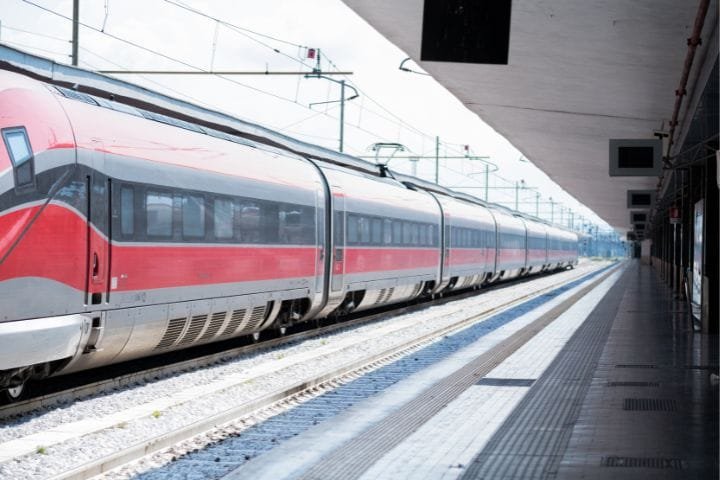
Cinque Terre Coastal Route: Tunnels and bridges along the Mediterranean coast
Rome-Florence via Orvieto: Rolling Tuscan hills and medieval hilltop towns
Milan-Venice: Alpine foothills transitioning to Venetian lagoon landscapes Circumvesuviana (Naples area): Local train to Pompeii and Sorrento with Vesuvius views
Trenino Rosso (Bernina Express): Cross-border route through dramatic Alpine scenery
Local secret: The regular Milan-Rome high-speed route passes through absolutely stunning Tuscan countryside, but most passengers miss it because they’re working or sleeping. Sit on the right side heading south for the best views.
From my countless train journeys across Italy, the rail system works best when you understand its rhythm. High-speed trains between major cities are genuinely world-class, while regional trains serve as affordable local transport. The key is matching your route and budget to the right type of service.
Getting Around Italy by Car
Let me be upfront about driving in Italy: it can be absolutely liberating or completely stressful, depending on where you’re going and your comfort level with aggressive driving styles. I learned to drive in Milan traffic, so I’m used to our… expressive… driving culture, but I’ve watched plenty of visitors struggle with everything from ZTL zones to toll roads.
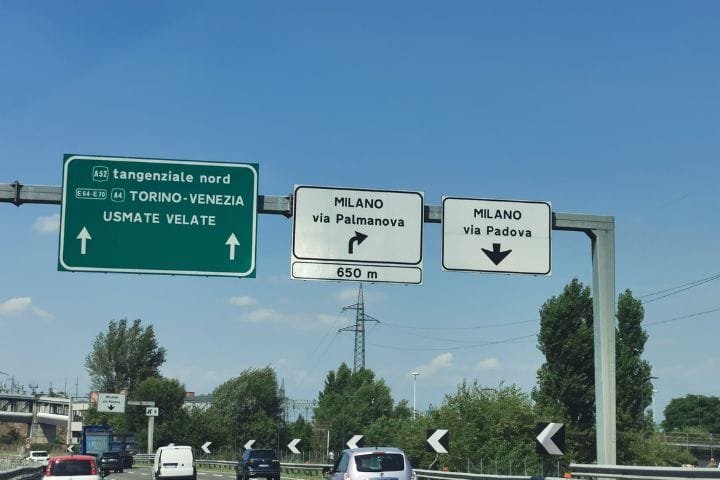
When Renting a Car in Italy Makes Sense
Perfect car rental scenarios:
- Tuscany wine tours: Hilltop towns and wineries are often inaccessible by public transport
- Amalfi Coast exploration: Coastal road trips offer stunning views (despite narrow roads)
- Southern Italy discovery: Road trips in Puglia, Basilicata, and Calabria, since they have limited train coverage
- Multi-generational family trips: Easier with luggage and flexible schedules
- Off-season rural travel: When some bus routes have reduced service
Skip the car for:
- Rome, Milan, and Florence city centers (parking nightmares and ZTL restrictions)
- Venice (obviously – it’s built on water)
- High-speed train corridors (Milan-Rome-Naples, where trains are faster)
- Peak summer coastal areas (traffic jams and impossible parking)
Regional reality check: I always tell visitors that cars are fantastic for Tuscany’s countryside but terrible for historic city centers. The sweet spot is combining both – trains between major cities, and car rentals for countryside exploration.
Check this if you are interested in driving in big cities:
🅿️ Parking Made Easy: City-by-City Guides for Drivers in Italy
Skip the guesswork when it comes to parking in Italy’s busiest cities. These detailed guides show you exactly where to leave your car — safely and legally:
👉 Where to Park in Rome When Arriving by Car – Insider tips on garages, street parking, and avoiding restricted zones in the Eternal City.
👉 Where to Park in Florence When Arriving by Car – The most convenient parking spots for visiting Florence’s historic center without the stress.
👉 Where to Park in Milan When Arriving by Car – From central garages to affordable long-term options, find the perfect spot in Milan.
👉 Where to Park in Venice When Arriving by Car – Your last stop before the canals — where to park before hopping on a vaporetto.
Car Rental Requirements in Italy & Essential Tips
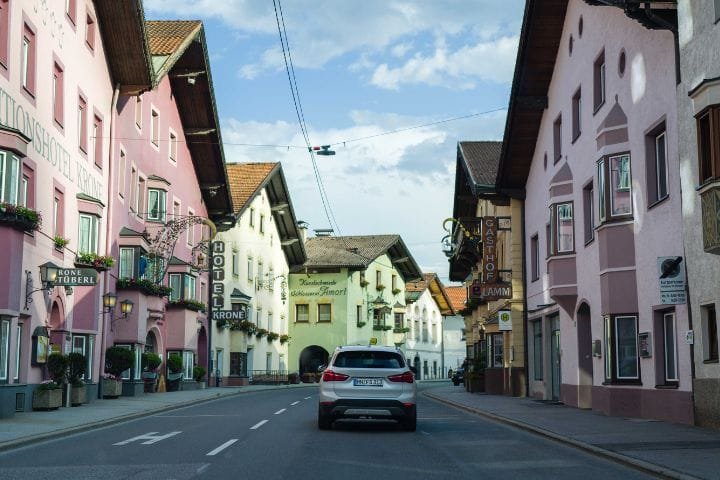
Documentation needed:
- International Driving Permit (IDP): Required for non-EU visitors
- Valid home country license: Must accompany IDP
- Credit card: For deposit and rental payment
- Comprehensive insurance: Absolutely essential for peace of mind
ZTL zones – The expensive trap: These “Zona Traffico Limitato” areas restrict car access in historic centers. Cameras automatically photograph license plates, and fines (€100-200) arrive months later. Even GPS systems sometimes fail to warn properly about these zones.
Smart ZTL avoidance:
- Research your hotel’s exact location before driving
- Ask hotels about parking arrangements and ZTL access
- Use park-and-ride facilities outside historic centers
- Download ZTL zone maps for major cities
Parking survival guide:
- Historic centers: Expensive (€20-40/day) when available
- Blue zones: Paid parking with time limits
- White zones: Free parking (rare in tourist areas)
- Hotel parking: Often essential to arrange in advance
🚗 Essential Pre-Trip Reads for Driving in Italy
Before you hit the road, make sure you’re set up for a smooth and stress-free journey with these expert guides:
👉 International Driving Permit for Italy: Full Guide – Find out if you need one, how to get it, and what rules apply to foreign drivers.
👉 How to Avoid ZTL Zones in Italy– Avoid costly fines by understanding where you can and can’t drive in historic city centers.
👉 Best Car Rental Companies in Italy for Foreigners – Reviews and tips to choose the right rental service for your trip.
👉 Best Car for Your Italy Road Trip: Complete Guide – From compact cars for tight city streets to SUVs for mountain drives, find your perfect ride.
Costs of Driving in Italy
- Economy cars: €25-45/day depending on season
- Mid-size vehicles: €35-60/day
- Automatic transmission: Add €10-15/day premium
- Insurance: €15-25/day for comprehensive coverage

Additional driving expenses:
- Fuel: €1.60-1.80 per liter (significantly higher than US prices)
- Highway tolls: Approximately €0.07 per kilometer
- ZTL fines: €100-200 if you accidentally enter restricted zones
- Parking: €15-40/day in tourist areas
Real example: Milan to Rome by car costs roughly €45 in tolls plus €60-80 in fuel, taking 5-6 hours. The high-speed train costs €29-120 and takes 2 hours 50 minutes. You do the math.
Pros and Cons of Italian Car Travel
Genuine advantages:
- Complete schedule flexibility and route control
- Access to small towns and rural areas, trains don’t reach
- Ability to stop for spontaneous discoveries
- Easier with large amounts of luggage
- Perfect for countryside and wine region exploration
Honest challenges:
- Aggressive driving culture (lots of gesturing and close following)
- Expensive fuel and toll costs
- Parking difficulties in tourist areas
- ZTL zones that can result in hefty fines
- Traffic congestion in major cities and coastal areas during peak season
Driving culture reality: Italian drivers are more assertive than those in many countries. We gesture expressively (it’s communication, not anger), follow closer than you might expect, and change lanes more fluidly. It’s not personal – it’s just our style.
Best Italian Road Trips and Scenic Drives

Tuscany Wine Route (Chianti Classico): Florence to Siena via SR222, passing through Greve, Panzano, and Castellina. Rolling hills, cypress trees, and countless winery stops.
Amalfi Coast Drive (SS163): Sorrento to Salerno along dramatic coastal cliffs. Stunning views but narrow roads and heavy traffic – start early or go off-season.
Great Dolomites Road: Bolzano to Cortina d’Ampezzo through spectacular Alpine scenery. Best June-September when mountain passes are fully open.
Sicily’s Eastern Coast: Taormina to Syracuse via coastal roads with Etna views and Greek archaeological sites.
Umbria Hill Towns Circuit: Perugia to Assisi, Spello, Montefalco, and back – medieval towns connected by beautiful countryside roads.
🌄 Scenic Drives in Italy You’ll Never Forget
From winding coastal roads to mountain passes with jaw-dropping views, these drives are as memorable as the destinations themselves:
👉 Tuscany Scenic Drives: Italy’s Beautiful Countryside – Rolling hills, vineyards, and medieval hill towns await around every turn.
👉 Dolomites Driving Guide: Scenic Routes & Safety Tips – Navigate alpine passes and valleys in one of Italy’s most stunning regions.
👉 Drive Rome to Amalfi Coast: You’ll Never Forget – A breathtaking mix of historic charm, coastal cliffs, and Italian romance.
👉 Puglia Road Trip Itinerary: Italy’s Hidden Gem – Explore a mix of dramatic coastlines, olive groves, and whitewashed villages.
👉 Drive Rome to Siena Through Tuscany: Perfect Trip – A city-to-city journey through the heart of Tuscany’s wine country.
The bottom line on Italian car travel: fantastic for countryside exploration and flexibility, challenging for city centers and peak season coastal routes. Know your limitations, plan for the costs, and understand our driving culture before getting behind the wheel.
Local driving tip: Italian highway rest stops (Autogrill) are actually quite good with decent food and clean facilities. They’re perfect for breaking up long drives and experiencing a unique aspect of Italian travel culture.
Getting Around Italy by Bus
Here’s what most tourists don’t realize about Italian buses: they’re often the unsung heroes of budget travel, reaching places trains simply can’t go. While everyone obsesses over our high-speed rail network, buses quietly connect mountain villages, rural areas, and budget-conscious travelers to destinations that would otherwise require expensive car rentals.
National vs Regional Bus Companies
FlixBus (The Budget Champion): Germany’s budget bus giant dominates long-distance Italian routes with modern coaches, WiFi, and surprisingly comfortable seats. Routes connect major cities and some smaller destinations across Europe.
Key FlixBus routes:
- Milan-Rome: €15-25, 6-7 hours
- Rome-Naples: €8-15, 2.5 hours
- Florence-Venice: €12-20, 4 hours
- International connections to Germany, France, and Switzerland
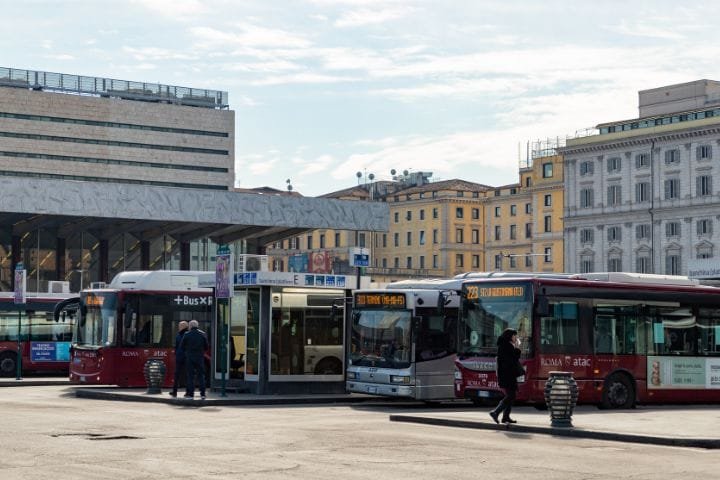
Marino Autolinee: Major Italian operator focusing on southern routes, especially connections between Rome and southern Italy destinations that trains serve poorly.
Regional bus companies (The Local Heroes): Every region has local bus companies serving rural areas:
- SITA (Tuscany, Veneto): Connects hilltop towns and rural areas
- COTRAL (Lazio): Serves areas around Rome not covered by trains
- ATAC (Rome city): Urban and suburban bus network
- ATM (Milan area): Regional buses extending beyond metro coverage
Local insight: Regional buses are where you’ll meet actual Italians going about their daily lives – students, workers, elderly people visiting family in small towns. It’s an authentic cultural immersion that most tourists never experience.
When Buses Are Better Than Trains
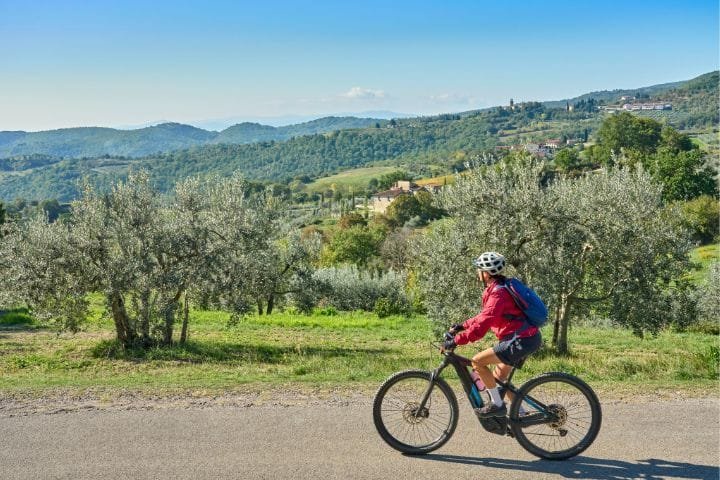
Budget travel: Buses cost 50-70% less than high-speed trains for similar routes
Rural destinations: Many Tuscan hill towns, mountain villages, and coastal areas have no train service.
Flexible scheduling: Regional buses often run more frequently to local destinations than infrequent regional trains
Direct routes: Sometimes buses provide direct connections where trains require transfers
Late-night options: Some bus routes operate when train service has ended
Real example: Getting from Florence to San Gimignano requires a train to Poggibonsi plus a connecting bus, or you can take a SITA bus for €6 that drops you right in the medieval town center.
Cost of Buses in Italy and Travel Times
Long-distance national routes:
- Milan-Rome: €15-25 (vs €29-79 by train)
- Rome-Naples: €8-15 (vs €25-45 by train)
- Florence-Venice: €12-20 (vs €19-45 by train)
Regional and local routes:
- Short routes (30-60 minutes): €2-5
- Medium routes (1-2 hours): €5-12
- Rural connections: €3-8
Time reality check: Buses take significantly longer than high-speed trains but often match or beat regional train times. Milan-Rome by bus takes 6-7 hours versus 2 hours 50 minutes by high-speed train, but costs one-third the price.
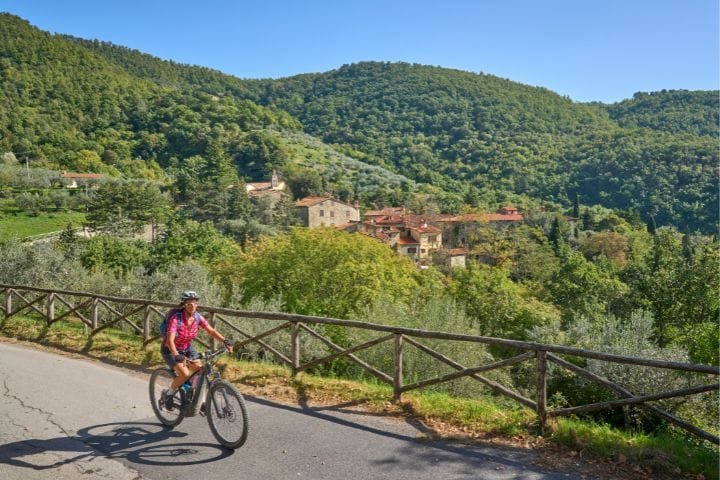
Tips for Booking and Comfort
Booking strategies:
- Online advance booking: Usually 10-20% cheaper than buying at the station
- Mobile tickets: Most companies offer smartphone tickets
- Flexible tickets: Some operators allow date changes for small fees
- Group discounts: Available for 3+ passengers on many routes
Comfort optimization:
- Choose your seat: Window seats on the right side often have better views
- Bring entertainment: WiFi can be unreliable, download content offline
- Pack snacks: Limited food options at rest stops
- Dress in layers: Air conditioning varies widely between operators
Station logistics:
- Bus stations are often separate from train stations
- Arrive 15-20 minutes early for boarding
- Validate paper tickets if required (ask the driver)
- Keep tickets until journey end – controllers check randomly
Seasonal Considerations
Summer challenges:
- Air conditioning quality varies dramatically between operators
- Coastal routes experience heavy traffic delays
- Popular tourist routes can sell out during peak season
Winter advantages:
- Heating usually works better than cooling
- Reduced traffic on most routes
- Some mountain routes may have weather-related cancellations
Off-season opportunities:
- Significant discounts on advance bookings
- More flexibility for spontaneous travel
- Authentic local experiences with regular commuters
From my perspective, watching tourists navigate Italian transport, buses get unfairly overlooked because people assume they’re uncomfortable or unreliable. The reality is that modern Italian bus service has improved dramatically, offering genuine budget alternatives to expensive trains while reaching destinations the rail network simply doesn’t serve. For travelers who prioritize savings over speed, buses unlock authentic Italian experiences at prices that won’t destroy your budget.
Domestic Flights in Italy
Domestic flights in Italy occupy this weird middle ground – sometimes they’re absolute lifesavers, other times they’re expensive mistakes. Having flown internally dozens of times for work and family visits, I’ve learned exactly when flying makes sense and when you’re better off sticking to ground transport.
When Flying Makes Sense
Island destinations: Sicily and Sardinia flights often provide the only practical option for time-conscious travelers. Milan to Palermo takes 1.5 hours by air versus 12+ hours by train and ferry.
Extreme north-south routes: Milan to Bari, Turin to Catania, or Venice to Cagliari, where surface transport becomes genuinely grueling time-wise.
Business travel: When time matters more than money and you need same-day return possibilities.
Peak season island access: Summer ferry bookings to popular destinations can sell out, making flights the backup option.
International connections: Sometimes domestic flights connect better with international departure schedules than surface transport.
When flying doesn’t make sense:
- Rome-Milan corridor (trains are faster door-to-door)
- Any route well-served by high-speed rail
- Short distances where airports are far from city centers
- Budget travel (domestic flights rarely offer genuine savings)
Get our FREE Italy
Travel Guide
E-Book
This printable guide is your ultimate companion for exploring Italy, with insider tips, detailed itineraries, transportation advice, must-see attractions, and more.

Budget Airlines in Italy
Ryanair: Covers most major domestic routes with their typical no-frills approach—bases in Rome, Milan, and various secondary airports throughout Italy.
EasyJet: Higher service standards than Ryanair with primary airport access. Strong presence in Milan Malpensa and Rome Fiumicino.
Wizz Air: Eastern European budget carrier expanding Italian domestic routes, often with newer aircraft and reasonable prices.
ITA Airways (formerly Alitalia): The national carrier offers domestic routes with full service but higher prices. Sometimes worth it for schedule flexibility and airport convenience.
Volotea: Spanish budget airline specializing in secondary routes, especially useful for reaching smaller Italian destinations and islands.
Booking strategy: Compare total journey time, including airport transfers, not just flight time. Rome’s main airports are 45-60 minutes from the city center, making short domestic flights less attractive than they appear.
Costs and Baggage Fees to Watch Out For
Typical domestic flight costs:
- Milan-Rome: €50-120 depending on timing and airline
- Rome-Palermo: €40-100 (often cheapest Sicily option)
- Milan-Cagliari: €60-140 (Sardinia access)
- Venice-Naples: €45-110
Hidden cost reality:
- Carry-on fees: Budget airlines charge €8-15 for overhead bins
- Checked baggage: €20-40 for 20kg bags
- Seat selection: €5-25 for specific seats
- Airport transfers: €8-50 depending on airport and transport method
Total cost calculation: A €50 Ryanair flight often becomes €80-100 with baggage and airport transfer, sometimes approaching train prices with way more hassle.
Airport Logistics and Timing
Major domestic airports:
- Rome Fiumicino: Main international hub, excellent transport links
- Rome Ciampino: Budget airline focus, further from the city center
- Milan Malpensa: Primary international, 45 minutes from the city center
- Milan Linate: Closer to the city center, mainly European routes
- Naples: Convenient city access, gateway to southern Italy
Check-in and security:
- Arrive 90 minutes early for domestic flights
- Online check-in reduces airport time
- Security is generally efficient, but can slow down during peak travel
- EU ID cards work for domestic flights (passport not required for EU citizens)
Airport transfer costs:
- Malpensa Express (Milan): €13 to the city center
- Leonardo Express (Rome): €14 to Termini Station
- Bus transfers: €5-8, but slower than rail options
- Taxi transfers: €40-60 to most city centers
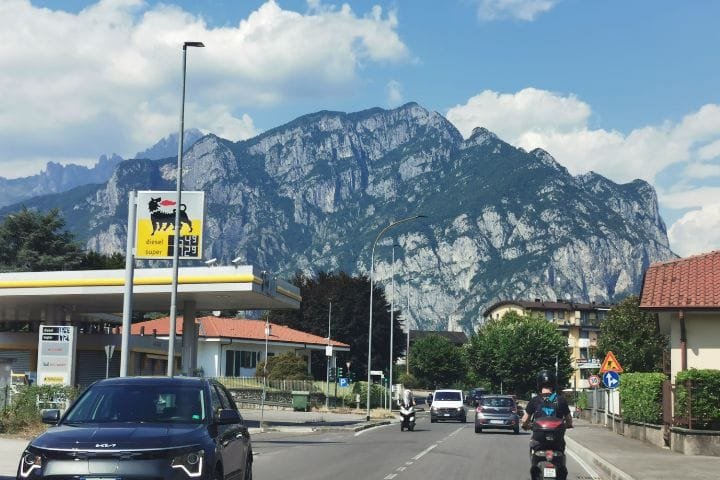
Seasonal Flight Considerations
Summer challenges:
- Significantly higher prices due to tourist demand
- Weather delays are more common with afternoon thunderstorms
- Airport crowds and longer security lines
- Island routes book out early
Winter advantages:
- Lower prices and better availability
- More reliable weather for punctuality
- Less airport congestion
- Off-season routes may have reduced frequency
Shoulder season sweet spots:
- Best balance of price and availability
- Reliable weather with minimal delays
- Good connections for island destinations
Alternative Airlines and Routes
Regional connections: Some smaller airlines serve specific routes seasonally, especially connecting northern Italy to southern destinations during peak travel periods.
Charter options: Occasionally available for popular island destinations during summer, though booking can be complicated for individual travelers.
The honest truth about Italian domestic flights: they solve specific problems (reaching islands quickly, extreme long-distance routes) but rarely offer the convenience or value they promise for mainstream travel. When surface transport takes more than 6-8 hours, flying starts making sense. For everything else, trains and buses usually provide better value and less hassle.
Before booking any domestic flight, calculate the total door-to-door time and cost, including airport transfers, baggage fees, and early arrival requirements. You might discover that the train gets you there just as fast for less money and stress.
Italian Ferries and Boats
There’s something genuinely magical about approaching an Italian island by ferry – watching the coastline emerge from the Mediterranean horizon while sipping an espresso on deck. I’ve taken countless ferry trips to Sicily, Sardinia, and smaller islands, and it’s one of those experiences that transforms simple transportation into part of your vacation adventure.
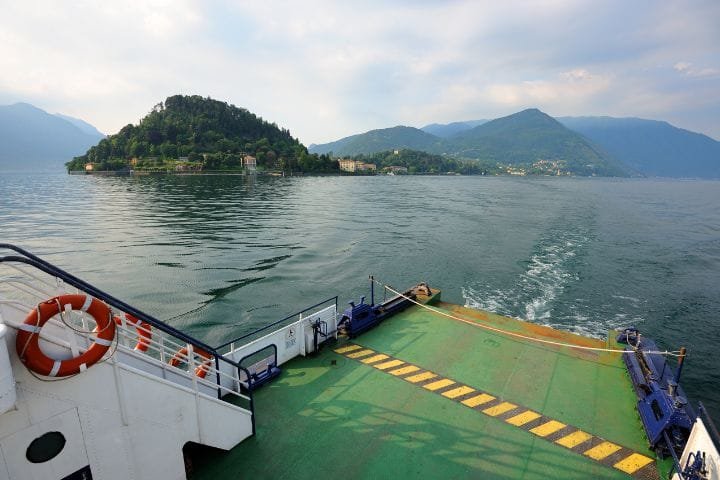
Italy Ferry Routes to Islands
Sicily connections:
- Villa San Giovanni to Messina: Shortest crossing (20 minutes), most frequent service
- Naples to Palermo: Overnight ferry with cabin options (10-11 hours)
- Civitavecchia to Palermo: Popular Rome-area departure (14 hours)
- Genoa to Palermo: Northern Italy connection (20 hours)
Sardinia routes:
- Civitavecchia to Olbia: Most popular mainland-Sardinia connection (6-8 hours)
- Piombino to Olbia: Shorter crossing from Tuscany (6 hours)
- Genoa to Porto Torres: Northern Sardinia access (12 hours)
- Naples to Cagliari: Southern Sardinia connection (15 hours)
Smaller islands:
- Naples to Capri/Ischia: High-speed ferries and hydrofoils (45-80 minutes)
- Piombino to Elba: Tuscany’s island escape (1 hour)
- Palermo to Ustica: Sicily’s diving paradise (2.5 hours)
Seasonal service reality: Many routes operate year-round, but frequency drops dramatically in winter. Summer brings peak prices and advance booking requirements, especially for popular weekend departures.
Booking Tips and Seasonal Schedules
Advance booking strategy:
- Summer (June-August): Book 2-3 months ahead for vehicle transport
- Shoulder seasons: 2-4 weeks are usually sufficient
- Winter: Often same-week availability, but reduced schedules
Booking platforms:
- Direct Ferry: Compare multiple operators easily
- Ferry company websites: Grimaldi, Moby, Tirrenia for the best prices
- Local travel agents: Sometimes offer package deals
Vehicle vs passenger-only: Taking your car costs significantly more (€80-200 extra) but provides island mobility. Consider whether you actually need a car on your destination island – many smaller islands are better explored on foot or by scooter.
Cabin vs deck passage: Overnight ferries offer various accommodation levels:
- Deck passage: Cheapest option, sleep in reclining seats
- 4-bed cabins: Shared facilities, budget-friendly
- 2-bed cabins: Private bathroom, comfortable for couples
- Luxury suites: Premium experience with balconies
Personal recommendation: I always book at least a basic cabin for overnight ferries. The small extra cost provides privacy, security for luggage, and actual rest. Deck passage sounds adventurous, but gets uncomfortable quickly.
Seasonal Schedule Variations
Summer peak (July-August):
- Maximum frequency with multiple daily departures
- Highest prices and advance booking requirements
- Crowds and longer boarding times
- Extended evening departures for vacation convenience
Shoulder seasons (April-June, September-November):
- Reduced but adequate service frequency
- Moderate pricing with occasional deals
- Comfortable passenger loads
- More flexible booking options
Winter services (December-March):
- Significantly reduced schedules (some routes 2-3 times weekly)
- Lowest prices but weather-dependent cancellations
- Essential routes maintain service, tourist routes may suspend
- Rough seas are more common (bring motion sickness remedies)
Scenic Boat Trips Worth Adding
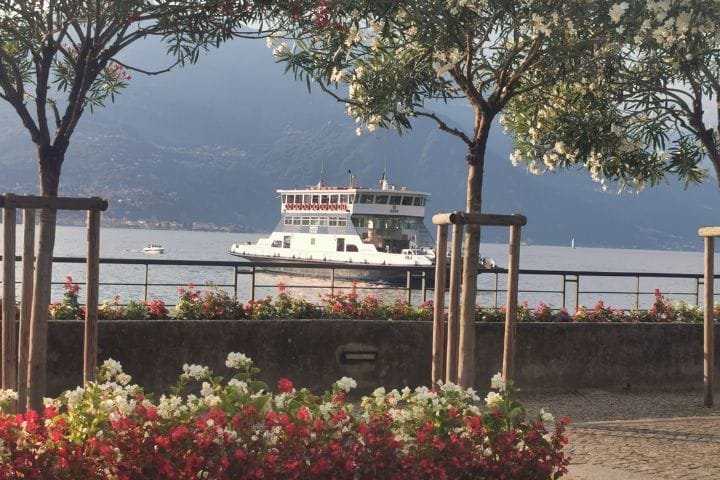
Amalfi Coast boat tours: Seeing the dramatic coastline from the water provides perspectives impossible from the crowded coastal road. Departures from Amalfi, Positano, and Sorrento offer different route options.
Cinque Terre boat connections: During calm weather, boats connect the five villages more efficiently than hiking or trains, plus provide stunning coastal photography opportunities.
Lake boat services:
- Lake Como: Regular ferry service connects lakeside towns with scenic mountain views
- Lake Garda: Extensive network reaching castles, gardens, and charming villages
- Lake Maggiore: Access to the Borromean Islands with incredible palace gardens
Venice lagoon islands: Beyond touristy Murano and Burano, vaporetto water buses reach Torcello’s ancient cathedral and other lagoon islands most visitors never discover.
Boat trip planning tips:
- Weather significantly affects smaller boat operations
- Motion sickness affects more people on boats than ferries
- Advance booking is recommended for summer and scenic routes
- Consider timing with meal service on longer trips
Ferry Travel Comfort and Logistics in Italy
What to bring:
- Motion sickness medication (Mediterranean can get rough)
- Entertainment for longer crossings
- Warm clothing (sea breezes get cool even in summer)
- Snacks and water (onboard food varies in quality and price)
Boarding process:
- Arrive 60-90 minutes early for vehicle transport
- Foot passengers can arrive 30-45 minutes before departure
- Bring a passport or an EU ID card
- Keep tickets until disembarkation
Onboard amenities: Modern ferries offer restaurants, bars, shops, WiFi, and entertainment areas. Overnight ferries often have pools, gaming areas, and children’s facilities.
The beauty of Italian ferry travel lies in the journey becoming part of your destination experience. Unlike flights that get you there quickly, ferries let you decompress, enjoy Mediterranean views, and arrive at your island destination already in vacation mode.
Plus, you’ll often meet interesting fellow travelers during longer crossings – part of the authentic Italian travel experience that rushing misses entirely.
City Transportation in Italy
Navigating Italian cities is where tourists either feel like locals or get completely overwhelmed. Each major city has its own transport personality, and what works perfectly in Milan might leave you stranded in Naples. Here’s the insider scoop on getting around our urban areas without losing your mind or your wallet.
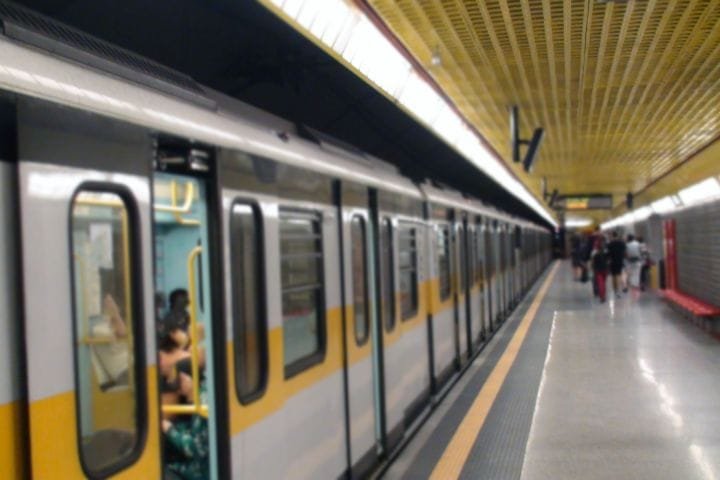
Metro, Buses, and Trams in Major Cities
Milan (Where I Live): Our metro system is genuinely excellent – clean, efficient, and constantly expanding. Three main lines (red M1, green M2, yellow M3, purple M5) cover most tourist destinations and connect to suburban areas.
- Metro coverage: Duomo, Scala, Brera, Navigli, and Porta Nuova are all easily accessible
- Day passes: €7.60 for unlimited travel, €2.20 for single tickets
- Operating hours: 6 AM to midnight (2 AM on weekends)
- Pro tip: Download the ATM Milano app for real-time updates and route planning
Rome: The eternal city’s transport reflects its ancient layout – comprehensive but sometimes chaotic. Metro has three lines (A, B, C) plus an extensive bus network.
- Metro limitations: Doesn’t reach all major attractions (Vatican requires bus/walk)
- Bus network: Extensive but can be crowded and unpredictable
- Tourist passes: Roma Pass includes transport plus attraction entries
- Local insight: Buses get impossibly crowded during rush hours – plan accordingly
Naples: Underground system plus funiculars accessing hillside neighborhoods create a unique urban transport experience.
- Metro art: Stations feature incredible contemporary art installations
- Funicular railways: Historic ways to reach Vomero and other elevated areas
- Bus challenges: Traffic congestion makes buses slow, but comprehensive
- Tourist tip: Buy tickets before boarding – validation required
Turin: Compact, efficient system with metro, trams, and buses serving a very walkable city center.
- Single metro line: Limited but useful for main attractions
- Extensive tram network: Covers areas that the metro doesn’t reach
- Day passes: €5 for unlimited travel within city zones
Florence: No metro system, but a comprehensive bus network serves a largely walkable historic center.
- Walking priority: Most attractions within 20-minute walks
- Bus utility: Mainly for reaching Piazzale Michelangelo and the suburbs
- Tourist considerations: The Historic center is largely pedestrian-friendly
Taxi & Rideshare Apps in Italy
Traditional taxis: Italian taxis are regulated with fixed rates for airport transfers and meter service within cities. They’re reliable but expensive compared to other transport options.
Taxi rates (approximate):
- Milan: €3.30 base fare, €1.29/km, €6-10 typical city center rides
- Rome: €3 base fare, €1.10/km, airport fixed rates €48-50
- Naples: €3.50 base fare, €1.05/km, challenging to find during peak times
Rideshare and taxi apps:
- FreeNow (formerly MyTaxi): Most reliable across major cities
- ItTaxi: Italian taxi booking app with decent coverage
- Uber: Limited availability, mainly in Rome and Milan, with higher prices than traditional taxis
Taxi etiquette:
- Round up fare to the nearest euro as a tip
- Luggage and night/holiday surcharges are normal
- Airport transfers often have fixed rates posted in terminals
- Always insist on meter usage for city rides
Personal taxi experience: I rarely use taxis in Milan because public transport is so good, but they’re essential for late-night Navigli returns or when traveling with heavy luggage. Always have the taxi company number saved – street hailing can be difficult.
Biking and E-Scooters in Italy
City bike programs:
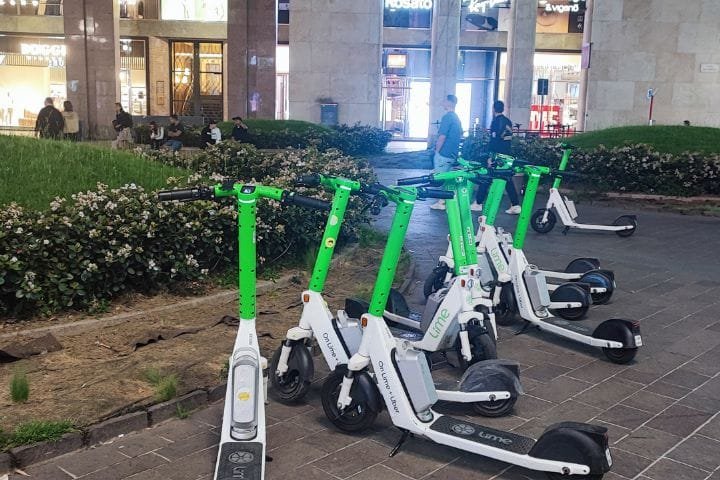
- Milan: BikeMi shared bikes throughout the city
- Rome: Limited bike infrastructure, but improving
- Turin: Bike sharing system covers the city center
- Florence: Challenging due to historic center traffic and hills
E-scooter reality: Electric scooters have exploded across Italian cities, though regulations change frequently:
- Operators: Lime, Bird, Wind are available in major cities
- Costs: €0.15-0.25 per minute after unlock fee
- Rules: Helmet recommended, sidewalk riding prohibited
- Parking: Must park in designated areas or face fines
Cycling infrastructure:
- Milan: Extensive bike lanes and a growing network
- Northern cities generally: Better cycling infrastructure
- Historic centers: Often challenging due to cobblestones and pedestrian zones
- Safety considerations: Italian traffic requires defensive cycling
Personal biking insight: I bike regularly in Milan, and the infrastructure has improved dramatically. However, cycling in Rome or Naples requires serious confidence and traffic awareness. For tourists, stick to dedicated bike paths and quieter neighborhood streets.
Public Transport Tickets and Passes
Ticket types across cities:
- Single rides: €1.50-2.00 depending on city
- Day passes: €4-7 for unlimited daily travel
- Weekly passes: €15-25 for extended stays
- Tourist cards: Often include transport plus attraction discounts
Ticket purchasing:
- Metro stations: Automated machines accept cards and cash
- Tobacco shops (Tabacchi): Traditional ticket sales throughout cities
- Mobile apps: Increasingly available for contactless payment
- Buses: Some cities allow onboard purchase, others require advance buying
Validation requirements:
- Metro: Tickets validated automatically at turnstiles
- Buses/Trams: Must validate in yellow/orange machines onboard
- Penalties: €50-100 fines for unvalidated tickets during inspections
Tourist transport strategy: For stays longer than 2-3 days, week passes usually provide the best value. For short visits, calculate whether individual tickets or day passes work better based on your planned journeys.
The key to mastering Italian city transport is understanding that each city evolved differently. Milan’s modern efficiency, Rome’s historical complexity, and Naples’ organized chaos all require different approaches. Download the local transport app, buy appropriate passes, and remember that walking often remains the fastest way to navigate historic centers where most attractions cluster together.
What is the Best Way to Get Around Italy
After years of helping visiting friends figure out Italian transportation, I’ve developed a simple decision-making framework that cuts through the confusion. The “best” way to get around Italy isn’t universal – it depends on your specific combination of budget, time, destinations, and travel style.

Decision-Making Checklist
Budget Priority (Most Important Factor):
- Tight budget: Regional trains + buses + walking
- Moderate budget: Mix of high-speed trains and regional transport
- Flexible budget: High-speed trains + domestic flights for long distances
- Luxury budget: Private transfers + first-class trains + domestic flights
Time Constraints:
- Limited time (1 week or less): High-speed trains between major cities
- Moderate time (1-2 weeks): Trains for cities, car for countryside
- Extended time (3+ weeks): Mix all transport types for variety and savings
Destinations and Regions:
- Classic triangle (Rome-Florence-Venice): High-speed trains exclusively
- Tuscany/Umbria countryside: Car rental is essential for flexibility
- Southern Italy exploration: Mix of trains, buses, and regional flights
- Islands (Sicily/Sardinia): Flights or ferries depending on time/budget
Travel Style Preferences:
- Comfort seekers: High-speed trains and avoid buses
- Adventure travelers: Mix everything for authentic experiences
- Efficiency-focused: Domestic flights for long distances
- Cultural immersion: Regional trains and buses for local interactions
Sample Itineraries Showing Mixed Transport Use
Classic 10-Day Italy (First-Time Visitors):
- Milan to Rome: High-speed train (2h 50m, €45-75)
- Rome city transport: Metro day passes and walking
- Rome to Florence: High-speed train (1h 30m, €35-65)
- Florence city + day trips: Walking + local buses
- Florence to Venice: High-speed train (2h 15m, €25-55)
- Venice transportation: Vaporetto passes + walking
- Venice to Milan: High-speed train (2h 30m, €35-65)
Total transport cost: €200-350 per person
Why this works: Maximizes time at destinations, minimizes travel stress, covers major highlights efficiently.
Tuscany + Umbria Road Trip (14 Days):
- Fly to Rome, train to Florence
- Rent car in Florence for countryside exploration
- Drive Chianti wine route, stay in agriturismos
- Explore Umbrian hill towns (Assisi, Spello, Montefalco)
- Return car in Rome, fly home, or continue by train
Why this works: Car provides access to rural areas trains can’t reach, flexibility for winery visits, and authentic countryside experiences.
Southern Italy Adventure (3 Weeks):
- High-speed train from Rome to Naples
- Regional trains/buses for Amalfi Coast exploration
- Ferry Naples to Palermo (overnight with cabin)
- Rent a car in Sicily for comprehensive island exploration
- Fly Palermo to Milan for an efficient return north
- Regional transport for final northern Italy destinations
Why this works: Combines efficiency with authentic regional experiences, uses each transport method where it excels.
Italy Regional Transport Strategy
Northern Italy (Milan, Lakes, Dolomites):
- Between cities: High-speed trains excel
- Lake exploration: Car rental for maximum flexibility
- Mountain areas: Car is essential for hiking access
- City centers: Public transport and walking
Central Italy (Rome, Florence, Tuscany):
- Major cities: High-speed trains are unbeatable
- Tuscany countryside: Car rental transforms the experience
- Day trips: Regional trains to Siena, Pisa, smaller cities
- Urban areas: Walking + public transport
Southern Italy (Naples, Puglia, Calabria):
- Main routes: Mix of high-speed and regional trains
- Rural exploration: Car rental is often necessary
- Coastal areas: Buses serve many beach destinations
- Budget option: Regional trains + buses reach most destinations
Islands (Sicily, Sardinia):
- Getting there: Flights vs. ferries based on time/budget preference
- Island transport: Car rental provides maximum freedom
- Urban areas: Local buses and walking
- Inter-island: Ferries for multi-island exploration
Common Transport Combination Mistakes
Over-relying on one method: Trying to see all of Italy by train misses rural beauty; attempting everything by car creates urban stress
Underestimating regional differences: What works in northern Italy often fails in southern regions due to infrastructure differences
Ignoring seasonal factors: Summer car travel in cities becomes miserable; winter island ferries have reduced schedules
Poor timing combinations: Mixing slow regional trains with tight schedules; booking car rentals during peak traffic periods
Smart Multi-Modal Strategies
The “Hub and Spoke” approach: Base yourself in major cities, use day trips via regional transport to explore surrounding areas, then high-speed trains to the next major base
The “Slow Travel” method: Spend longer periods in each region, using local transport extensively to develop deeper regional knowledge
The “Efficiency Maximizer”: High-speed trains between distant cities, cars for rural exploration, flights only for islands or extreme distances
Personal recommendation: I always suggest the combination approach to visiting friends. Use trains for what they do best (connecting major cities quickly), cars where they excel (countryside exploration), and other methods to fill specific gaps. Tourists who try to force one transport method for everything usually end up frustrated and miss authentic experiences.
The secret to successful Italian transportation isn’t finding the perfect method – it’s understanding when each option provides maximum value for your specific travel goals. Flexibility and willingness to switch between transport types unlock Italy’s incredible diversity while keeping costs reasonable and stress levels manageable.
FAQs – Getting Around Italy
These are the questions I hear constantly from visiting friends and colleagues about navigating Italian transportation. Here are the straight answers based on real local experience.
Do I need to rent a car to see Italy?
Absolutely not for the classic tourist route. High-speed trains connect Rome, Florence, Venice, Milan, and Naples more efficiently than driving. You’ll save money, avoid parking nightmares, and reduce stress significantly.
You DO need a car for Tuscany wine country, rural Umbria exploration, southern Italy regions like Puglia, and any itinerary focusing on small towns and countryside. I recommend the combination approach to most visitors – trains between major cities, and car rental for specific countryside regions.
Is it cheaper to take trains or buses in Italy?
Buses are significantly cheaper for similar routes, typically 50-70% less than high-speed trains. Milan-Rome costs €15-25 by bus versus €29-79 by high-speed train. However, buses take 2-3 times longer than trains. Calculate your time value – sometimes the train premium is worth the hours saved.
How far in advance should I book train tickets in Italy?
High-speed trains should be booked 1-4 months ahead for the best prices, especially during summer. Early booking can save 50-70% off walk-up fares. Regional trains need no advance booking since tickets are fixed price.
Are domestic flights in Italy worth it?
For islands and extreme distances, yes. Flying to Sicily or Sardinia often makes sense time-wise, as does Milan to far southern destinations. Generally not worth it for high-speed rail corridors like Rome-Milan where trains are faster door-to-door. Budget flights look cheap until you add baggage fees and airport transfers – calculate the total cost and time before booking.
Can I get around Italy without speaking Italian?
Absolutely, but basic phrases help tremendously. English works well at major train stations, tourist centers, and with younger staff. Italian becomes important for regional buses, taxi drivers outside major cities, and in rural areas. Essential phrases include “Dove è la stazione?” (Where is the station?) and “Quanto costa?” (How much?). Google Translate’s camera feature works excellently for signs and schedules.
Is Italian public transport reliable?
Varies dramatically by system. High-speed trains are extremely reliable, and regional trains are generally punctual with occasional delays in southern regions. Milan’s public transport is very efficient, Rome’s is comprehensive but crowded, Naples’s is extensive but affected by traffic. I depend on Milan transport daily with rarely any issues, while Rome requires more patience and backup planning.
What’s the best transport app for Italy?
Start with Google Maps for general planning, then use the Trenitalia app for train booking with the best prices. Moovit works well for city transport in most major cities, while ATM Milano is essential for Milan specifically. Download offline maps for areas with limited data coverage.
Your Italian Transportation Adventure Awaits
Getting around Italy doesn’t have to be complicated or stressful. Understanding Italian transportation is like unlocking a secret code – once you get it, everything becomes intuitive and enjoyable.
The key insight I share with every visiting friend is this: there’s no single “best” way to travel in Italy.
High-speed trains excel for city connections, cars provide countryside freedom, buses offer budget-friendly access to hidden gems, and ferries transform island journeys into memorable experiences. The smartest travelers use each method where it shines brightest.
Remember that transportation in Italy is part of your cultural experience, not just a way to get from point A to point B. Those conversations with locals on regional trains, the anticipation of watching islands emerge from ferry decks, the freedom of discovering unmarked Tuscan vineyards by car – these moments often become the most treasured memories of Italian adventures.
Start with your priorities – budget, time, destinations, and comfort level – then choose the combination of transport methods that matches your travel style. Book high-speed trains in advance, research ZTL zones before driving, download essential apps, and maintain flexibility for spontaneous discoveries.
Whether you’re watching sunrise over the Mediterranean from a ferry deck or sharing espresso with locals in a train station bar, you’re experiencing authentic Italian life that package tours simply can’t provide.
Buon viaggio! (Have a wonderful journey!)
Get our FREE Italy
Travel Guide
E-Book
This printable guide is your ultimate companion for exploring Italy, with insider tips, detailed itineraries, transportation advice, must-see attractions, and more.

💬 We’d love to hear from you!
Have questions, tips, or personal travel stories to share? Drop them in the comments below — your insights help fellow travelers plan their adventures too.





